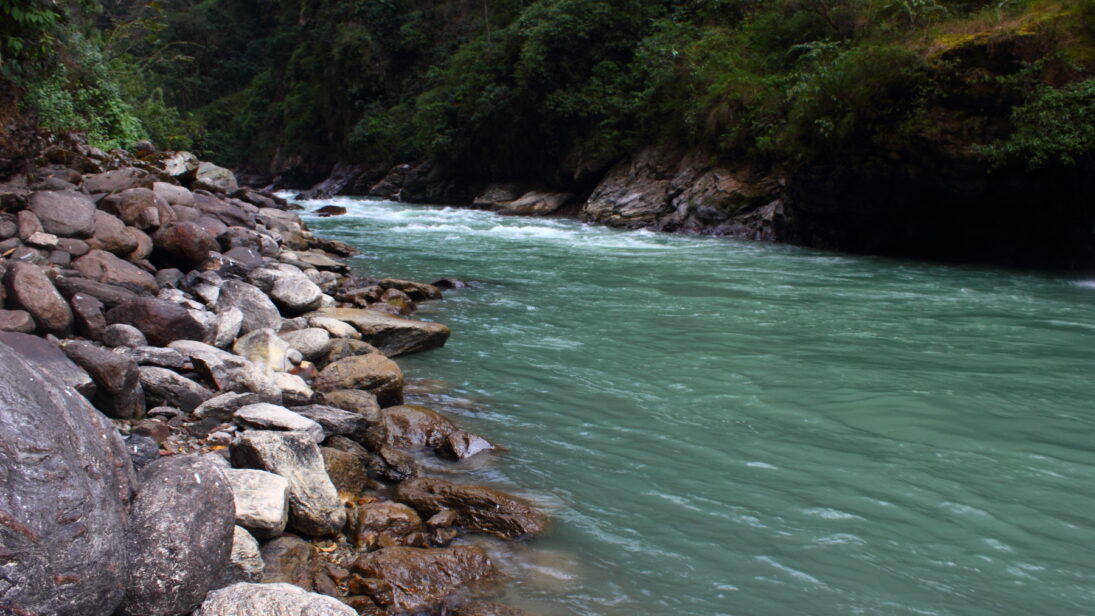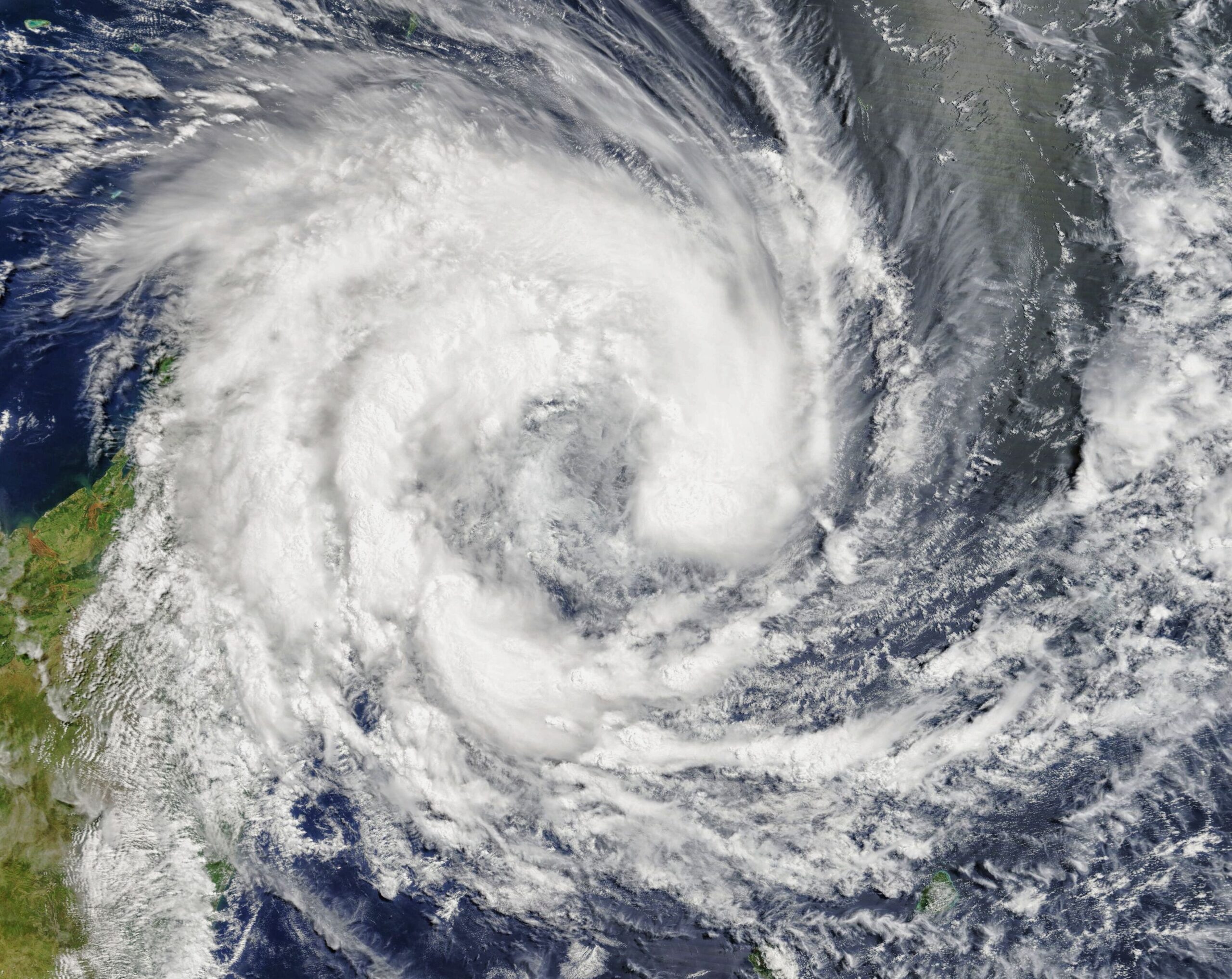
Two events in June 2023 highlighted how climate-induced disasters increasingly have a transboundary impact and how a lack of data transparency limits how countries can respond. As Cyclone Biparjoy approached the coasts of Pakistan and India that month, newspaper reports were silent on any sign of cooperation in the face of an approaching natural disaster. While many would take this for granted, given the hostility between the two countries, in the same month, people in the Indian state of Assam blamed Bhutan’s dams for exacerbating floods. Bhutan was also experiencing catastrophic flooding, but a lack of transparent, publicly available data-sharing meant a jointly experienced disaster quickly became an excuse to trade accusations. In one case, lack of data transparency made it impossible for a coordinated response, and in the other, it led to tensions between two friendly neighbors.
Cyclones and transboundary floods are only set to increase. The number of cyclones in the Arabian Sea, like Biparjoy, has increased by 52 percent from 1982-2000 to 2001-2019. Every degree of global temperature rise leads to a 15 percent rise in extreme rainfall in high mountains. Nor are these the only forms of challenges that climate change is bringing to South Asia. The countries in the region have large agricultural communities, which are deeply dependent on annual monsoons that are becoming increasingly erratic. Hotter temperatures in the Indian Ocean are leading not only to more powerful ocean storms, such as cyclones and hurricanes but also dramatic sea level rise, raising the salinity of communal water sources and agricultural land, destroying essential staple crops and those needed for exports; essentially, forcing those who live in low-lying areas to either flee or drown.
Relying on a narrow understanding of water issues as technical challenges rather than diplomatic or political ones that can be solved by quick-fix engineering solutions, overseen by a small and opaque water bureaucracy, has only made matters worse.
Given that South Asian countries are being similarly affected and share similar socio-economic conditions and institutional frameworks, cooperation should be natural. Unfortunately, this is not the case for two major reasons. One is the region’s lack of working transboundary institutions, and the second is the institutionalized culture of data secrecy. South Asian governments should address both of these structural issues to find successful pathways forward to adapt to climate change.
Few Institutions for Cooperation
Despite clear regional similarities, South Asian cooperation on climate-induced disaster management remains minimal due to the lack of functioning cooperative institutions. The only transboundary institution of significance is the South Asian Association for Regional Cooperation (SAARC), but geopolitical tensions stymie its effectiveness. The most significant geopolitical division within the institution is between India and Pakistan, which led the group to indefinitely postpone summits since November 2014. The Bay of Bengal Initiative for Multi-Sectoral Technical and Economic Cooperation (BIMSTEC), while another notable transboundary institution, does not encompass the entire South Asian region but includes Thailand, which limits its capacity to create a comprehensive South Asian strategy.
Political stalemates have yet to completely halt cooperative efforts though. The SAARC Disaster Management Center (SDMC), established in 2006, expanded its mandate in 2016 by integrating the work of the SAARC Meteorological Center (Bangladesh), SAARC Forestry Center (Bhutan), and SAARC Coastal Zone Management Center (Maldives). However, the lack of updates to Pakistan’s country profile since 2013 seems to indicate that there is little higher-level political engagement. Without a push from each country’s political class, these institutions will not run independently. After all, the politicians allocate funding and set the agenda. For example, despite its name, there has only been one South Asian Annual Disaster Management Exercise, which occurred in 2015.

The need for more political will to substantially engage on these issues is evident even in long-standing relationships. As intense rainfall events continue to increase in the Himalayas, politicians in the Indian states of West Bengal and Assam find it easy to blame Bhutan’s dams – even though most were built through Indian assistance. Nepal and India signed a treaty in 1954, with an update in 1966, to manage the Kosi River, and yet, almost every year, there is another flood in the downstream Indian state of Bihar. As the senior Nepali commentator Kanak Mani Dixit explains, the issue is not just a matter of whether the countries engage but also who is given the authority to engage. Relying on a narrow understanding of water issues as technical challenges rather than diplomatic or political ones that can be solved by quick-fix engineering solutions, overseen by a small and opaque water bureaucracy, has only made matters worse.
An Opaque Water Bureaucracy
The lack of data available in the public domain is a critical barrier to cooperation. For instance, Indian officials consider all data about transboundary rivers that flow into Pakistan, Afghanistan, or Bangladesh to be “classified.” Without public access to basic data, a “hydrocracy” emerges in which a select group controls water resource governance and excludes the broader community from critical information. This problem is particularly acute for the larger transboundary rivers of the Himalayan region. In a series of reports on the Indus, Ganga, and Brahmaputra rivers released by the International Center for Integrated Mountain Development (ICIMOD), scientists from across the region highlighted that by keeping such data private, governments are also limiting scientific cooperation.
Without public access to basic data, a “hydrocracy” emerges in which a select group controls water resource governance and excludes the broader community from critical information.
The communities residing along these disputed borders bear the brunt of this opacity, remaining uninformed about potential environmental threats. However, when information is shared directly through community-level actors—using mobile technology, for instance—these systems have demonstrably protected lives and property, and often at very low cost. This grassroots-level data sharing has proved effective along the Nepal-India and Bhutan-India borders, where community-driven information networks are life savers in times of environmental crises.
Conclusion
Transboundary cooperation, by its very nature, is a responsibility of governments. South Asia has limped along without the political will to empower transboundary institutions, which are held back by the governments themselves that hold the data hostage. A first step to changing this dynamic could begin with South Asian governments making hydrological data more available to their own people. Communities along borders are both interested in using that data to help each other and are innovative enough to find ways of doing so that work within their economic constraints. In other words, instead of asking the governments of South Asia to do more to cooperate, it may be more fruitful to ask them to do less – or at least less gatekeeping of data – and let the people and communities of the transboundary river basins drive the process.
This article is part of a joint series between South Asian Voices and The Third Pole on Climate Diplomacy in South Asia.
***
Image 1: Kosi River via Wikimedia Commons.
Image 2: Tropical Cyclone via Wikimedia Commons.